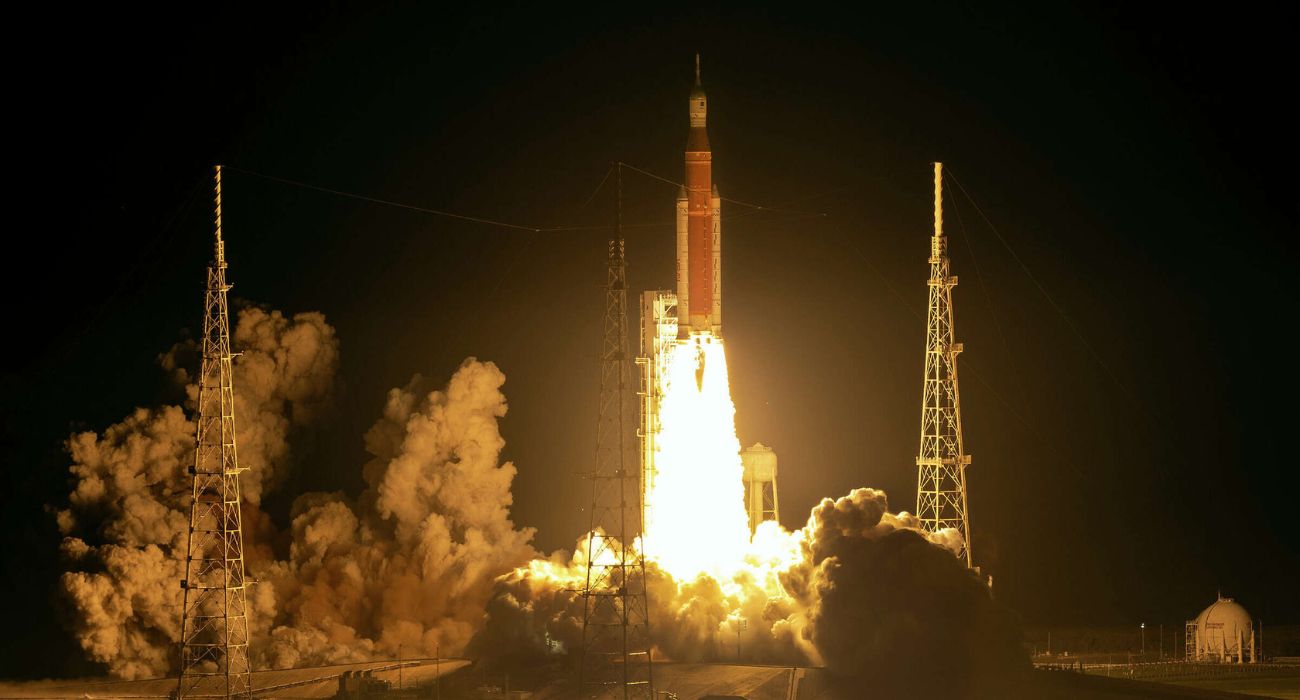Artemis I, NASA’s Space Launch System (SLS), was successfully launched from the Kennedy Space Center in Florida this morning on November 16. The rocket, the first test of the Artemis Program, is the most powerful rocket ever built, surpassing the Saturn V rocket.
The rocket, also known as Artemis I, launched at 1:47 a.m. EST and carried an Orion spacecraft with it to the moon. Orion is planned to travel approximately 40,000 miles beyond the Moon and return to Earth over the course of 25 days. Splashdown for the craft is expected to occur on December 11 in the Pacific Ocean.
“It’s taken a lot to get here, but Orion is now on its way to the Moon,” explained Jim Free, NASA’s deputy associate administrator for the Exploration Systems Development Mission Directorate. “This successful launch means NASA and our partners are on a path to explore farther in space than ever before for the benefit of humanity.”
The launch had been threatened by tropical storm Nicole, forcing NASA to review the rocket’s viability ahead after damage to its insulation was observed, as previously reported by The Dallas Express.
The mission management team considered moving the launch to November 19, which would have added to the multiple delays already caused to this mission by hydrogen fuel leaks and other glitches. Luckily, the rocket was deemed flight-ready.
NASA’s Artemis lunar-exploration program is the successor of the Apollo Program and aims to set up the first long-term presence on the lunar surface and lay the foundation for sending astronauts to Mars.
Artemis I is the first step in achieving these goals. The mission sought to evaluate Orion’s systems, including its heat shield, in spaceflight and return/reentry conditions, as well as to confirm the safety before sending astronauts in the future.
Orion is expected to fly by the moon on November 21, soaring just above the lunar surface before entering its distant retrograde orbit thousands of miles away. This will put the aircraft to the ultimate test in deep space.
Assessing Orion’s performance during this mission is crucial. NASA plans to send four astronauts around the moon in its next launch, Artemis II, in 2024 and land personnel there as early as 2025.






